The Ethics of Octopus imagery: Part 2
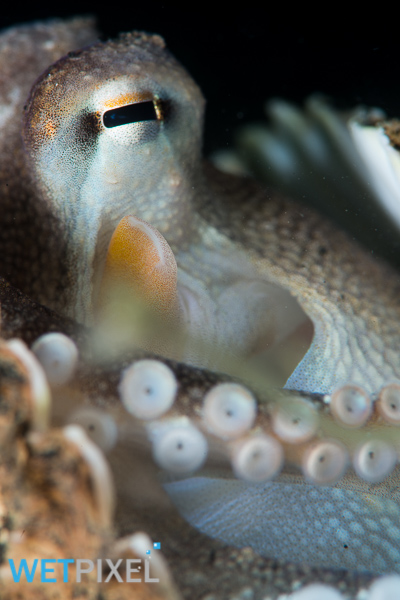
The Ethics of Octopus imagery: Part 2
By Lauren Siba
I work at a busy dive centre in Indonesia where approximately 95% of our guests take underwater images. The visitors range from casual shooters trying out GoPros or compact cameras for the first time to eminent professional underwater photographers working on assignment or conducting photography workshops. We have a universal policy for all staff and guests: No animals should be manipulated in order to see or photograph them. Whilst this policy is not infallible and no individual is perfect, we make strenuous efforts to impart this message to all who dive with us. This includes showing an educational video to our guests on arrival, asking them to sign a document promising not to manipulate sea life, holding regular training and feedback sessions for guides, and taking preventative or corrective action based on comments from guests and staff alike.
In November 2015 we were contacted by David Liittschwager, who enquired about staying with us. His objective was to photograph octopus whilst on assignment for National Geographic (NG). He specifically stated that he would need to set up aquariums and lights on land and asked whether we could arrange this.
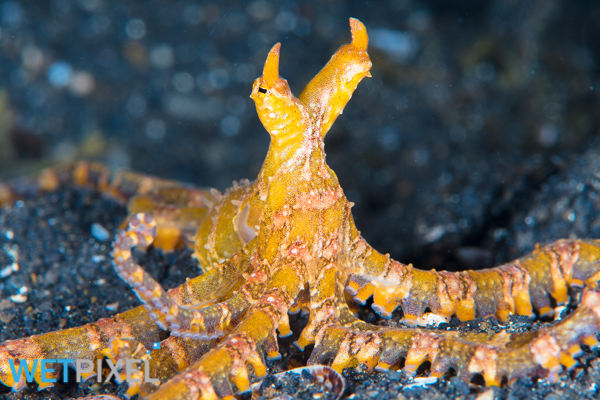
We were surprised at this request. It seemed incongruous to support a non-interference ethos, yet allow a photographer from a prestigious publication to capture octopuses, take them out of their habitat and place them in aquariums for the sake of a photographic assignment.
When we politely informed Mr. Liittschwager that we would not consider the request, he responded by replying with a link to his photography stating, “we have prepared a sample of our work so you might see why the white background is of interest to me. I think a combination of octopus in their habitat and the white background pictures would produce something very lovely for the magazine.” Apparently, he believed that we would make an exception to our policy if we saw how beautiful his white background aquarium shots are.
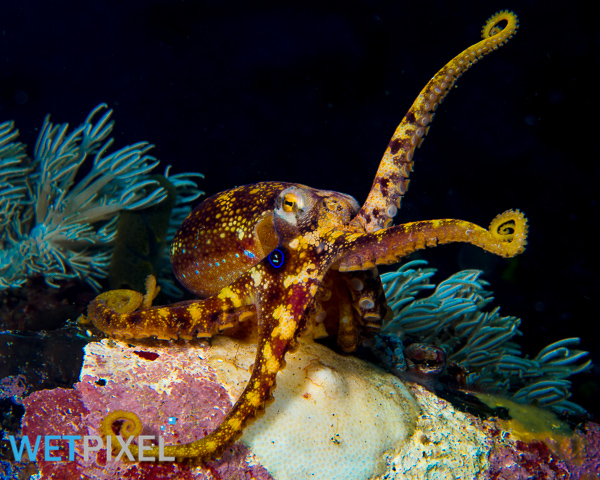
The concept that capturing, moving, confining and stressing animals for the sake of photography is justified if the photos are attractive enough is not one we share. We repeated that we couldn’t allow this to take place but said we hoped to be able host him and his team if he wished to take fantastic shots of octopus in their natural habitat. In the end, Mr. Liittschwager and his team did their shoot in the Solomon Islands instead.
In October 2016, National Geographic published an article about octopuses, with photos by Mr. Liittschwager. This openly stated: “To photograph the octopuses for this story, David Liittschwager put them in custom-fitted aquariums placed in front of white backgrounds”.
None of the photos used in the article feature octopus in their natural habitat. I was surprised and disappointed that the photographer and NG used this technique in order to get what they deemed to be more attractive images with a white background than could be obtained by shooting the animals in the wild. However, this is their editorial prerogative.
In terms of the animal’s welfare, one photo of an octopus placed in an aquarium during the shoot in the Solomon Islands even shows it inking and states in the caption underneath that octopuses “release ink when they feel threatened”. This would suggest that the photographer and his team were aware of the animal’s stress but felt that capturing an image of this stress reaction took precedence over the animal’s welfare.
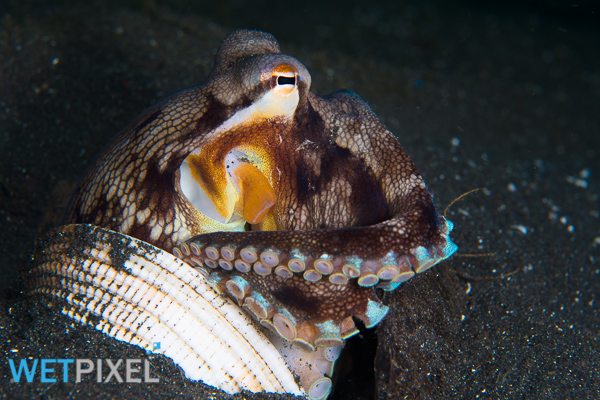
Octopuses are very intelligent animals and the title of the article was “Why Do Octopuses Remind Us So Much Of Ourselves ” Why do intelligent animals have to be captured and held in an aquarium for the sake of a photo? If the subject had been other charismatic animals like wild chimpanzees for example, would NG have considered it acceptable to capture them, put them into small white boxes for hours and photograph them? Or, from an editorial and ethical standpoint, to publish a photo of an animal which is showing clear signs of stress due to human intervention and then label it as such as if the stress reaction were a mere curiosity?
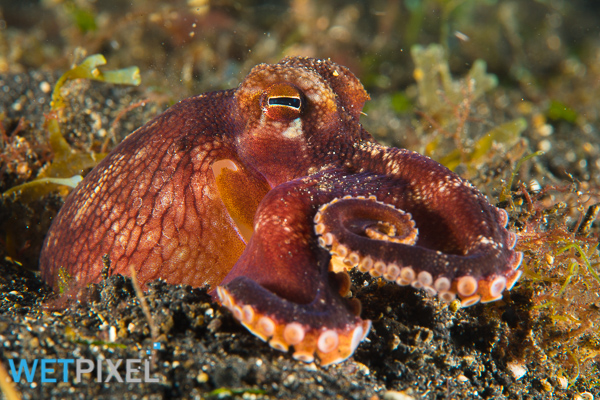
Disappointed, in November 2016 I reached out to NG both via email and on the comments section of the online article. The latter was rapidly removed and National Geographic did not respond to any of the emails I sent. (Wetpixel has also reached out to NG for comment and supplied them with a draft of this article. Despite them initially agreeing to issue a statement about the shoot, they have not actually done so thus far.)
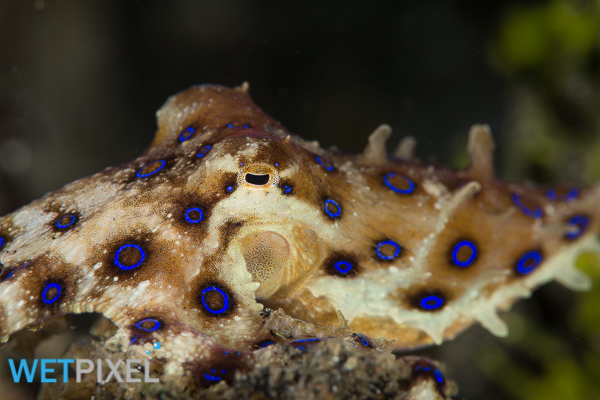
In an era where diving and access to underwater photography is increasing, it’s important to set standards of ethical behavior towards the animals we see and photograph. Leading nature magazines and professional photographers must act as a role models as others will want to emulate the photos they see online or in famous magazines but perhaps more crucially, it is the right thing to do ethically. National Geographic, Mr. Liittschwager and the editorial team at NG apparently believe that the beauty of the images taken outweighs the welfare concerns of the subject. Furthermore, they seem to exercise a cavalier attitude in refusing to acknowledge or debate the issue with concerned individuals.
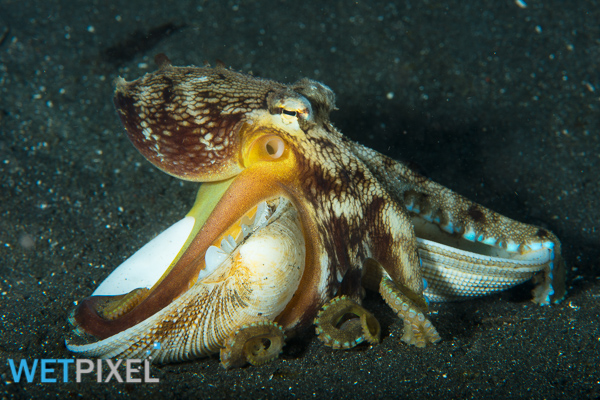
Whilst many underwater photographers have intentionally or inadvertently impacted on their subjects, responding to criticism when this is pointed out and learning from it shows a commitment to a sustainable ethic. In this instance, NG’s reaction to this has been to ignore or delete questions and comments. This reinforces the impression that NG either doesn’t care about ethics in photography or consider themselves above the moral guidelines that apply to the rest of us.
About the Author:
Lauren became fascinated by octopus as a kid after watching a TV documentary and now seeks them out as her favourite animal to see on dives, fascinated by their intelligence, curiosity and ability to alter their appearance. She currently works as the dive center manager at Critters@Lembeh Resort, Lembeh, Indonesia.